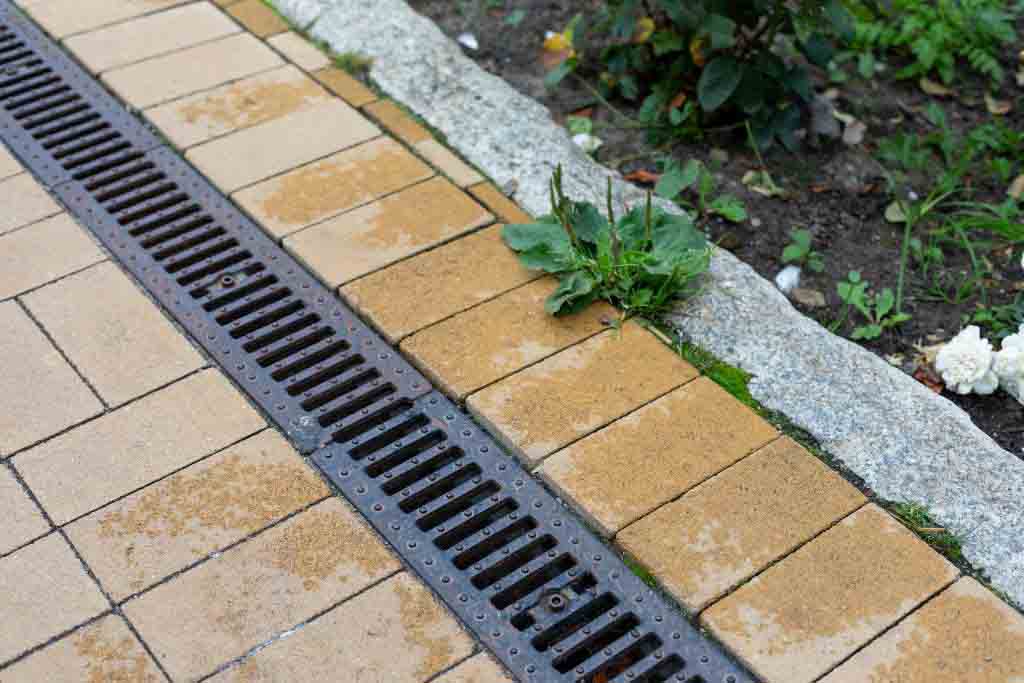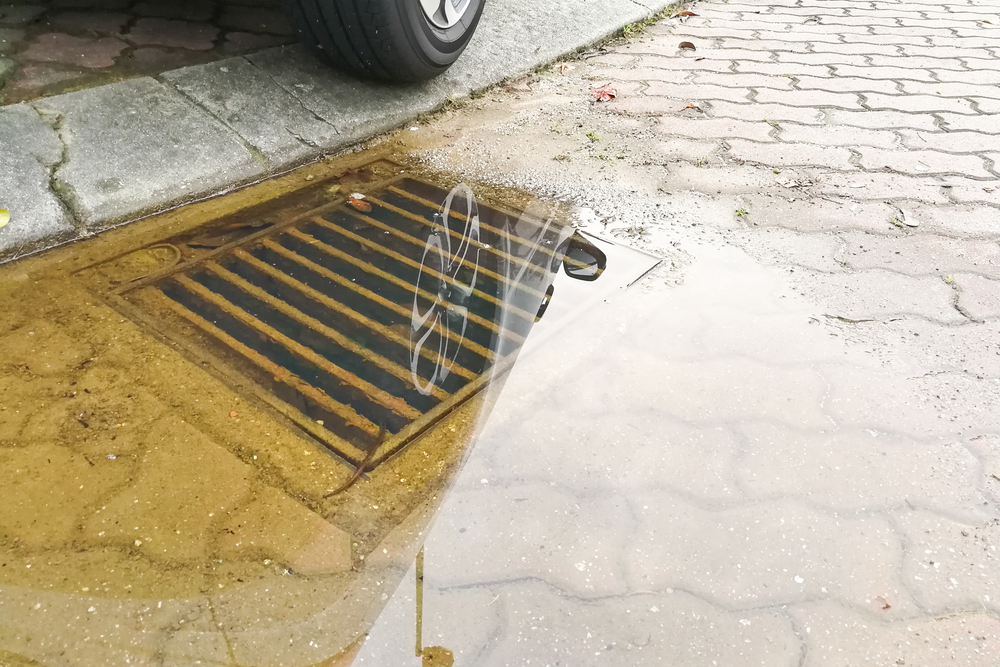When people think about drainage, they often picture downpipes, stormwater pits, or the gutters on their roof. But when it comes to managing surface water – especially over wide or flat areas – there’s one solution that does the heavy lifting quietly and effectively and doesn’t get the attention it deserves. We’re talking about the humble trench drain.
If you’ve got pooling water near your driveway, patio, garage, or footpath after heavy rain, there’s a good chance a trench drain is the answer you’ve been looking for. But while they’re common across the Gold Coast and Tweed Heads and beyond, most homeowners don’t really know:
- How these drains work
- Where to install them
- Or just how important they are to the long-term health of their property.
Let’s break it all down – and uncover some of the surprising things most people don’t know about trench drainage.
What is a trench drain?
A trench drain is a long, narrow surface drainage system designed to collect and redirect excess water from hard or flat surfaces. It’s made up of a channel set into the ground and topped with a protective grate. These systems are sometimes called a trough drain or grated trench drain, and you’ll find them in places like:
- Driveways and garages
- Pool decks
- Patios and walkways
- Carparks or loading areas
- Around the perimeter of homes or buildings.
The purpose is to intercept water before it builds up or runs into unwanted areas, such as your home’s foundation or garage floor.
What most people don’t know about trench drains
They’re more common – and yet more misunderstood – than most people realise, especially when it comes to how and where they actually work. So let’s run through what most people don’t know about trench drains – but should.
1. They’re not just for commercial properties
A lot of homeowners assume trench drains are only used in big commercial buildings or carparks. In reality, a well-placed yard trench drain can be a game-changer for suburban properties – especially those on flat blocks or near clay-heavy soils, where surface water has nowhere to go.
2. There are different types
Not all trench drains are built the same. Some are pre-cast concrete trench drain systems, while others are lightweight plastic or HDPE modular channels. The best option depends on load requirements, location, and aesthetics – and it’s important to understand how trench drains fit within the broader landscape of stormwater drainage solutions. From surface drainage to subsurface systems, several types of drainage systems serve different purposes depending on site conditions and usage needs.
- Need to drive over it daily? Go for something durable like reinforced concrete with a strong trench drain grate.
- Just managing overflow in the garden? A lightweight option might be fine.
3. Proper slope is everything
Water won’t flow if your drainage trench is level or poorly graded. A good trench drain installation requires careful planning to ensure the channel has a steady, consistent fall toward the outlet. Even a slight miscalculation can cause water to pool instead of drain – defeating the purpose.
4. Maintenance matters
A clogged trench drainage system doesn’t just stop working – it can actually back up and cause more damage than if it wasn’t there at all! That’s why periodic cleaning and stormwater maintenance are essential, especially during Gold Coast storm season. Leaves, dirt, bark, or mulch can all collect in the grate and block the flow.
Many modern trench drains come with easily removable grates so homeowners or professionals can clean them out as needed.
5. A grate isn’t just for looks
The trench drain grate serves two purposes:
- Keeping debris out
- And preventing injury or accidents.
They also come in different strengths – from decorative lightweight covers for pedestrian use to heavy-duty cast iron for driveways and machinery areas.
Some grates even come with slip-resistant surfaces or decorative designs, depending on the installation site.
6. They can blend into landscaping
If done right, a trench drainage solution can be almost invisible. Flush grates installed between pavers or along the edge of garden beds allow the system to function without being an eyesore.
Want something even more subtle? Some systems are designed to be hidden under turf or stones while still allowing water to enter.
7. They’re an investment in property protection
Flooded garages, cracked foundations, and eroded paths are expensive problems. Installing the right drain trench early – especially in water-prone zones – can save thousands in long-term repairs. A small upfront investment in a trench drain might be the best preventative plumbing decision a homeowner can make.
Key components of a trench drain system
Let’s break down a typical trench drainage system into its basic components:
Channel or trough: The long base that collects and channels water
Grate: The top layer that covers the trench and lets water in
End caps/outlets: Direct water toward a connected stormwater system
Slope or fall: Ensures water flows naturally toward the outlet
Surrounding concrete or pavers: Secures the system in place
Getting the trench drain detail right during the planning process ensures long-term performance with minimal ongoing maintenance.
When should you install a trench drain?
Some of the most common scenarios where trench drain installation makes the most sense include:
- Water pooling in your driveway or carport
- Flooding inside a garage during rain
- Erosion around footpaths or patios
- Runoff from neighbouring properties flowing into your yard
- Surface water seeping into foundations or basement walls.
If you’re constantly redirecting water with temporary fixes – sandbags, garden hoses, ad-hoc channels – a permanent trench drainage system is almost certainly the better and more attractive option.
DIY VS professional installation
While there are DIY trench kits out there on the market, proper trench installation requires:
- Accurate trench depth and slope
- Secure bedding and backfill
- Correct connection to stormwater infrastructure
- Safe handling of concrete (if needed).
That’s where the friendly pros at Drain Masters Plumbing come in. We assess your site, design the system to suit your needs, and handle the full install – including any necessary excavation, grading, and integration with existing plumbing.
Choosing the right trench drain for your property
The ideal trench drain for your home depends on:
- Where it’s going (driveway, patio, backyard, etc.)
- What kind of traffic it will bear (pedestrian, vehicle, heavy machinery)
- Local council requirements
- Soil type and drainage conditions.
Here at Drain Masters Plumbing, we help you choose the right size, material, and configuration – and then ensure the job is done properly and compliantly from the start.
Get expert trench drain advice today
If you’ve got surface water issues, it’s worth looking beyond basic solutions. A grated trench drain is one of the most effective ways to keep your property dry, safe, and structurally sound – especially in the flood-prone, rain-heavy climate from the Gold Coast and Tweed Heads and beyond.
Drain Masters Plumbing are your local experts in trench drain installation, stormwater drainage, and customised solutions for any surface runoff problem. Whether it’s a new build, a driveway upgrade, or a retrofit, we’ll recommend the best approach for your property – and install it right the first time.
Give us a shout today to discuss your drainage needs or book a site assessment for a custom trench solution.






